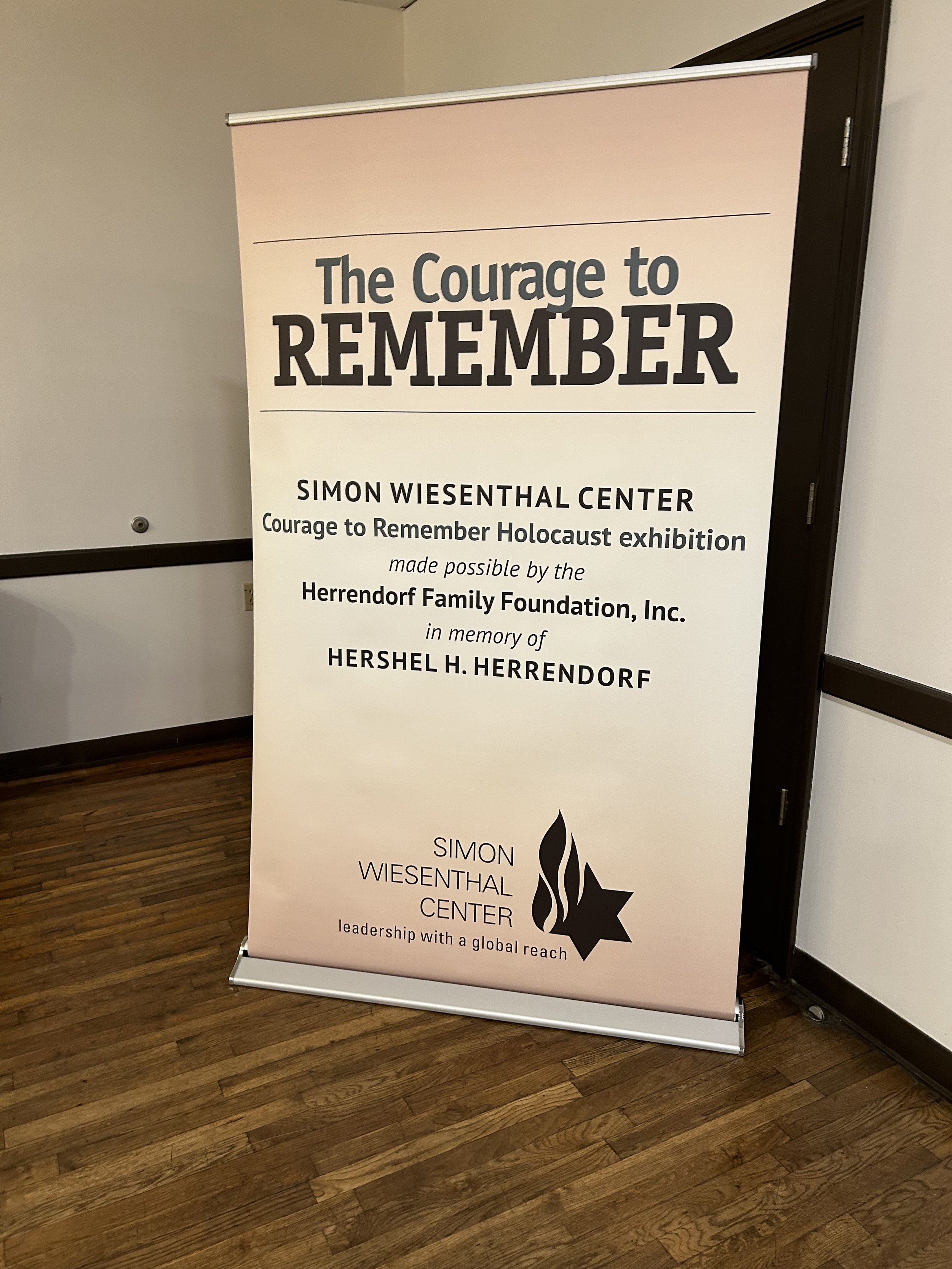Remember history with courage to make a better future
Given the divided and conflicted world we live in today, it was very striking and thought-provoking to see the traveling exhibit about the Holocaust that was recently featured at the Champaign-Urbana Elks Lodge from May 15-26. As the last of the 40 standing posters of the exhibit, “Courage to Remember,” points out about the history of the Holocaust: “Take heed … lest you forget the things which your eyes have seen, and … teach them to your children and to your children’s children.” Deuteronomy 4:9
I didn’t see the horrendous genocide of the Holocaust with my own eyes, but I’ve made the effort to inform my children, my students and others about those appalling times. When I was still teaching and spent the summers with my children, I read to them, watched movies, and discussed history and literature with them. One of the books I read to them was “The Diary of Anne Frank.” One of my daughters, who visited the Holocaust exhibit with me, said, “I knew about the Holocaust before I ever learned about it in school because of that.”
During the 1993-94 school year at Urbana High School, where I taught English and journalism, a history teacher took students to see the film, “Schindler’s List,” including the exchange student from former East Germany who was living with my wife and me. The movie is set in Krakow, Poland, south of Warsaw where Bill Gingold, who was responsible for getting the exhibit to Champaign, escaped the Warsaw Ghetto when he was a child. In the movie, businessman Oskar Schindler arrived there in 1939 to make a fortune from World War II. Like many people today, he did things for money and power and joined the Nazi Party because it was politically expedient and staffed his factory with Jewish workers for similarly pragmatic reasons. Then he realized that the SS, an abbreviation for Schutzstaffel (Protective Echelon), the black-uniformed “political soldiers” of the Nazi Party, were murdering Jews in the Krakow Ghetto. Schindler arranged to have his workers protected to keep his factory operating and thus saved innocent lives.
The exhibit title poster at the Elks Lodge
I was sitting at my desk at home when our German student came to the door with tears in her eyes. I thought maybe she was homesick and asked, “What’s the matter?”
“My class saw ‘Schindler’s List’ today,” she said, crying softly. “How could my people do that?”
How could her people, how could our people and how could any people be so cruel? But there are too many who still are—perhaps not at the systematic scale of the Holocaust exactly, but we still live in a cruel, divided world.
Somewhere along the line in my years as a teacher, I heard about the 1955 French documentary, “Night and Fog,” and used it in a Communication Through Media class, and I often showed it in other classes, too, although it was not part of the regular curriculum.
According to The Criterion Collection website, “Ten years after the liberation of the Nazi concentration camps, filmmaker Alain Resnais documented the abandoned grounds of Auschwitz and Majdanek in ‘Night and Fog’ (‘Nuit et Brouillard’), one of the first cinematic reflections on the Holocaust. Juxtaposing the stillness of the abandoned camps’ empty buildings with haunting wartime footage, Resnais investigates humanity’s capacity for violence, and presents the devastating suggestion that such horrors could occur again.”
It’s an important documentary, although difficult to watch. The effect of the brutality also makes you wonder how anybody could be so cruel and hateful. But cruelty in its various forms is still perpetrated here and around the world by people who believe in one race or another, one religion or another, or that one way of life is superior and they will fight and kill for their way to prevail. Even Gen. George “Blood and Guts” Patton, whose U.S. Third Army liberated Buchenwald, was sickened by what he saw in the concentration camp—and vowed that others should see it, too. It was reported that in a shed he saw about “30 emaciated bodies … sprinkled with lime in an attempt to cover the smell.” While he had seen much violence in the war, the “sights and smells in the camp” had caused him to vomit.
Many years later when I visited the site, I quietly shed tears when I saw how human beings were gruesomely and methodically killed and cremated. They were backed up to the wall near the ovens as through their height was to be taken. Then a spike of sorts was driven into their skulls. I was stunned.
Buchenwald was “a camp judged second only to Auschwitz in the horrors it imposed on its prisoners” and was liberated on April 11, 1945, at 3:15 p.m. That is now the permanent time displayed on the large clock at the entrance gate. As we walked up to the gate, one of the members of the group looked up at the clock, not realizing its stilled significance, and said blankly, “The clock is stopped.”
It wasn’t too surprising that the time on the clock didn’t register some 70 years after the liberation and the end of World War II.
Some moments in history inevitably get lost over time. But the larger lessons have to be remembered somehow, passed down and preserved to remain real enough to make a difference, to keep from repeating the perverse horrors of the past. It’s not easy. And yes, it takes courage to remember.

